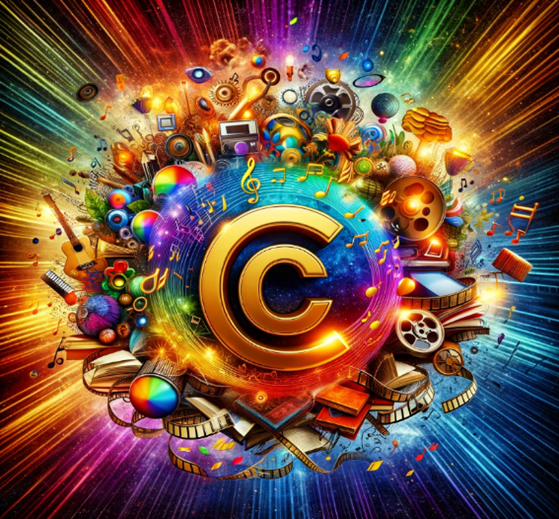Generative AI is impacting content creation and the content marketing landscape in multiple ways, creating efficiencies, and enabling marketing teams to do more in less time. However, its adoption is not without challenges.
Let’s look at the opportunities, challenges, and considerations for implementing AI usage for marketing teams.
The Generative AI Opportunities
Efficiency in content production

Generative AI can automate the creation of diverse content types—from text to images and videos—freeing up content marketing teams to concentrate on strategy and customer engagement. This shift can significantly reduce the time and resources spent on content production. It hasn’t yet reached a stage of development where it can produce high quality long-form content as well as professional writers, without human intervention. But it might reach that stage in the future.
It’s raining ideas!

Ideation is infinitely easier with AI. For content or marketing managers at long-established companies, identifying fresh ideas for blog content or interesting white paper topics can be hard going. But with AI, it’s possible to generate numerous ideas quickly, and then refine those ideas further to find excellent topics and build a sizeable list of key points to consider for inclusion.
Scalability and content personalisation
Through advanced data analysis capabilities, generative AI allows for high-level personalisation. Marketing managers can utilise AI tools to create content tailored to various audience segments, potentially enhancing user engagement and satisfaction.
Innovative content formats

Generative AI introduces new possibilities in content formats, such as AI-generated virtual reality experiences, interactive web elements, and personalised video content. These innovations could lead to better audience engagement and open up new channels for user interaction.
Generative AI Implementation Challenges
Quality and brand voice
One of the significant challenges with generative AI is ensuring the content aligns with the brand’s voice and meets quality standards. While good prompting and the use of examples will typically bring the output closer to what is required, AI-generated content currently requires human oversight to fine-tune the output for overall quality and alignment with brand guidelines.
Copyright – yours and not yours

Technological advances often result in laws needing to be implemented, clarified or changed, as the ramifications of the technology emerge. That’s certainly the case with Generative AI, which has raised two significant issues around AI and copyright.
The first is that some AI models have been trained on content that includes copyrighted material. As there’s no specific exception in Australian law that allows for this, that means that the AI platforms may have breached the authors’ copyright by using their material that way. There are currently several cases before the American courts. Decisions made by courts here and overseas may impact the way legislators deal with these issues in the coming years. The impact could spread past the AI platforms if courts find they have breached copyright – as any breaches would likely flow on to content that was derived from those breaches.
Another issue with generative AI content creation is that our current Australian laws around copyright require the creative input of a human for copyright to exist. The current consensus for the Australian context seems to be that if you create content using generative AI, you might own the copyright if a sufficient level of human input was involved – but as the law has not yet defined what level of input counts, you also might not own the copyright!
The Australian Arts Law Centre outlines the issues in their fact sheet ‘Artificial Intelligence and Copyright‘. It’s a slightly different story in New Zealand, where an entity can also hold copyright. Here’s a fact sheet on copyright in NZ.
(For more information, you can also read our article: Copyright and Writing for the Web)
Transparency – an ethical consideration
In Australia, at the time of writing there’s no requirement for companies to label AI generated content as such, but that could change. Some argue that readers have a right to know whether content they’re served has been created by a human or AI. I feel it’s unlikely that this issue will develop into a requirement to label content, but it’s certainly a possibility. If it does, then we could see readers giving preference to human created content. Or taking no notice at all.
However, if you operate in markets outside Australia, it’s important to be aware of laws that apply to those markets. For example, if you operate in Europe, you’ll want to be aware of the EU Artifical Intelligence Act.
Confidentiality of information

If you’re leveraging original research data and internal expertise to create original content, you’ll probably be reluctant to put that information into a generative AI platform to produce content. Unless there’s a guarantee that the platform won’t use your input (or output) for training, there’s a risk that your insights will find their way into competitor articles – which would be embarrassing if your own content was still working its way towards publication.
For larger companies with hundreds or thousands of employees, there are many other scenarios in which confidential or sensitive information could be inadvertently compromised. For example, an employee could input confidential or sensitive information into an AI platform to obtain a summary or produce a related email or report. This type of risk underscores the importance of not only having an AI Use policy in place, but ensuring that employees are educated on the risks, and for those permitted to use AI tools, training in how to use them appropriately.
Broader AI risks and security issues
The risks in engaging with AI extend well beyond those attached to content creation and intellectual property. AI offers businesses new ways to collect and use personal information, creating privacy implications. It’s also created new opportunities for misuse and mischief! The Australian Signals Directorate’s article Engaging with Artificial Intelligence summarises some common risks, provides examples, and discusses mitigation considerations.
Bias and accuracy
Ensuring the accuracy and fairness of AI-generated content is critical. Biases in training data can lead to skewed outputs, there’s the ‘hallucination’ problem, and the issue of how well AI tools can identify credible sources of information. Marketing managers and content creators should maintain oversight to ensure the credibility and inclusivity of the content.
These issues are likely to be reduced as the technology evolves, but in the meantime, be sure to have a good fact-checking process in place.
The number of available AI tools!
Choosing the right AI tools from the avalanche of tools and platforms entering the market, looks set to become another challenge! For larger companies, simply evaluating the options could be a time consuming exercise. Once an organissation’s use cases are identified, options will need to be assessed for a range of factors, from their suitability for each use case, to the level of compliance with privacy and security requirements.
AI’s environmental impact

Generative AI’s environmental footprint is considerable, primarily due to the high energy consumption required for operating powerful AI models. For example, generating images and videos with AI involves intensive computational processes that can lead to significant CO2 emissions.
While this might be reined in as the industry matures, companies that value a low environmental footprint and sustainable practices will want to be aware of the issue, and any progress towards improvement.
Training teams to use AI
ChatGPT, Gemini, Copilot and other AI tools might seem like fab new apps that anyone can use. But the truth is that to use them well, you need to understand their limitations, and learn how to use well-constructed prompts to achieve the best results. Without sufficient training and practice, staff will simply waste time trying to achieve good results before calling on human copywriters to do (or fix) the work.
Strategic implementation of Generative AI
AI use policy
The first step towards implementing AI should be creating an AI use policy. As a minimum, a policy should address the ethical use of AI, including data handling, copyright management, and adherence to legal standards. Given the ease of access to free AI tools from desktop, tablet or mobile phone, educating employees around AI risks and appropriate use, and ensuring that the awareness is maintained across the organisation, will be vital in reducing risk.
AI integration guidelines
Developing clear guidelines for integrating generative AI into marketing activities will be essential. Guidelines should cover ethical usage, quality control, alignment with brand, review processes, as well as clear instruction for common usages, and guidance around prompting. These guidelines can be referred to internally, or shared with your external writing agency.
Training and skill development

Continual learning has never been more important. With the technology still developing, change will be constant and marketing teams will need to keep up.
Consider implementing AI marketing training that covers current issues and limitations in Generative AI, the technical aspects of managing AI tools, and the strategic use of AI-generated insights to enhance content relevancy and audience engagement.
Like it or not, Generative AI looks set to revolutionise marketing activities. Personally, I have mixed feelings about AI. As a content agency owner and a writer, I wonder whether this technology will lead to human creativity becoming more valued, or completely unvalued. I worry about the many creatives who will lose work. But I’m also an efficiency nerd and a person who loves to absorb new information – so at the same time I’m excited about the potential of AI.
When you next need professional writers for high quality long-form content, reach out to the team at Article Writers Australia.
Leonie Seysan is the Director of Article Writers Australia, and manages the team of professional writers and editors. She holds a Bachelor of Communications Degree (Media Studies) and has been writing professionally for over 15 years. Leonie is also the podcast host of 'Content with Humans'.





